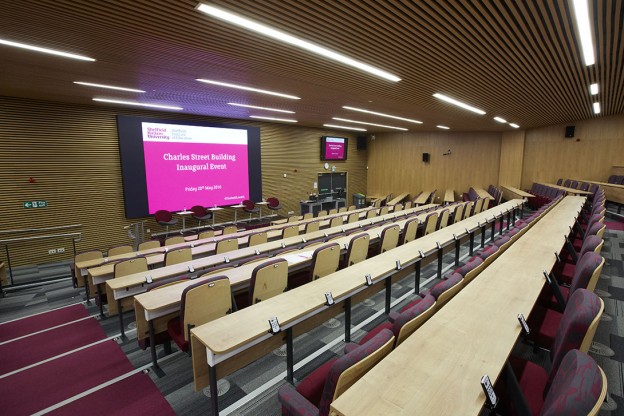It was about fifteen minutes after take-off and I was offered a thimble full of diet Coke and a postage stamp size packet of peanuts. Despite the minuscule size of the packet of peanuts, emblazoned across it was the statement ‘Warning: may contain nuts’. This worried me on two levels: firstly as a packet of peanuts I was expecting it to contain nuts (in fact it not containing nuts would be the issue); secondly, the word ‘may’ – I was hoping for something more definitive, ‘will contain nuts’ would have covered it. So a single statement managed to both reaffirm the obvious and establish doubt – surely not the desired outcome.
Such ‘buyer beware’ statements are creeping in to our lives from various sources. Indeed, if the advice of Freeman et al (2014) were heeded all university open days should include the following, ‘Warning: may contain lectures which can reduce your academic performance’. In their meta-analysis of 225 research articles investigating the effect of delivery method on examination performance, the ‘traditional lecture’ was seen as notably undermining student performance when compared to ‘active learning’.
Active learning was associated with a 6% higher performance when compared to tradition lectures. 6% is a sizeable number and considering how grades can cluster around degree boundaries could be what lifts fails to passes and enhances 2:1s to Firsts. Freeman et al seized this notion and boldly positioned their paper as the academic equivalent of the Surgeon General’s 1964 report on Smoking which ultimately led to mandatory health warnings about smoking. They established the impression that it is almost unethical to continue to lecture students; such diligent analysis, such notable findings must herald the move towards similar academic health warnings for students sitting in lectures. Why would anyone engage in a delivery approach which could reduce exam performance?
However, before we score out the lecture from our pedagogic handbooks and turn our lecture theatres into bingo halls and cinemas, we should really be clear about what Freeman et al meant by ‘traditional lectures’. The study defines lectures as ‘continuous exposition by the teacher’ where the students were limited in their activities to note taking combined with a few unprompted questions. This was contrasted with ‘active learning’ which was defined as students being engaged via activities and/or discussions and not simply listening to an expert. Hence, the lecture is defined as counter to active learning environment. This immediately raises concerns, as it is perfectly possible for lectures to be ‘active’. Lectures can require direct student engagement and such approaches are quite typical. There is also another assumption, and that is ‘lectures are homogenous’, be this in the nature of information they are used to share or how they are managed. In Freeman et al’s study, lectures are presented as the transmission of information.
With this in mind that simple warning about lectures becomes a little less clear cut. Lectures are a contested pedagogic tool, with advocates on either size passionately arguing for and against. However, as in this case, seldom is time invested to evaluate what the lecture is being used to achieve or how the lecture can be managed to achieve this goal. Bligh (1988) has long argued that the lecture has notable weaknesses, especially around the transmission of information – books, journals, web sites can arguably do this much more effectively. The lecture can be overwhelmingly passive with students left adrift in an ill structured monologue which allows the tutor to believe ‘content has been delivered’. Content which may have been ‘transmitted to’ but not necessarily ‘received by’ the students, as Freeman’s 6% underperformance illustrates.
However, lectures can – arguably should – be ‘active’. Is thinking not an activity? A good lecture will certainly stimulate thinking and can provide opportunities for thoughts to be captured and reflected on. Using ‘voting and feedback software’ to allow students to directly comment on a topic can allow all students to engage, anonymously if appropriate, and this information can be recorded and integrated into the session. Lectures can structure opportunities to engage with peers and allow students to immediately test out or challenge ideas and concepts. Lectures can illustrate how ideas link together, modelling the thought structures of the expert to novices. Lectures should inspire further investigation to take place outside the lecture. They don’t have to – indeed shouldn’t – just ‘deliver information’. In keeping with the warnings theme however, ill-conceived or gimmicky ‘active learning’ can also be off-putting to students. Such practices should have a clear purpose and support the aim of a lecture in engaging students and making them think.
It would appear that an error has been made in not differentiating good well designed lectures from poor and ill-considered lectures. So perhaps the warning should be ‘Warning: may contain bad lectures which can reduce your academic performance’. And our efforts should be focused on developing our lectures to be used where they are most appropriate, powerful and beneficial. If we achieve this the warning may be completely different, ‘Warning: contains lectures which may inspire, engage and excite’.

Leave a Reply